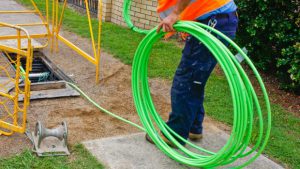NBN and higher speeds your news update
In prior posts, I have indicated a need to increase the average speed of all users on the NBN.
They, NBN, would like to see an average download speed of over 50 Mbps to meet with the world standard target for developed nations. (OECD)
Now halfway through their roll out they are doing something about it, or are they?
Wholesale pricing is controlled by NBN who sell capacity to the carriers.
The carriers, people like Telstra, Optus, II net etc, then add a margin to get to a retail rate or what you pay. It is a bit more technical than that but you get the idea. It is generally how business works you buy low and sell high.
There are individual rates for each band that people choose, 12.5-25-50 or 100 Mbps. This is a great deal because it all costs the same to NBN, they just take the foot off the throttle.
There are a couple of other costs passed on to us like the number of consumers to a selected band with and throttling the speed during peak times. This may even get worse as we move forward
NBN billing
When all this started NBN came up with a rate to bill the carriers but unfortunately, most consumers selected 25 Mbps or less so decreasing the income for both parties. That is not so good as they need a forecast return on this massive investment.
Recently NBN confronted the problem and dropped the rate to the carriers who in turn to the users and the result was about one million new users upgraded. Hence a better return.

What sticks in my claw is that the original deal with the early adopters, I understand, will remain as was. So they now have a two-tier deal of pricing.
Plus the old distance factor

Add to that the distance factor where many of us can’t achieve speeds anywhere near the top speed of 100 Mbps even if we wanted to. This is a limitation of the FTTN model.
That is until they retrofit to FTTC and like that is happening sometime soon.
Yes, they are rolling out FTTC but only in selected suburbs and only to those having the old HFC channels.
To be fair they have an obligation to connect as many users to NBN as they can and to do that as quickly as possible.
In some circumstances, this is not happening and creating genuine concern for many.
Where is NBN now?
NBN say that 6.5 million homes and businesses are ready for connection and that 3.7 million of them are connected and they are well on the way to 8 million by 2020. In my book that’s 20-32 months away.
It is interesting the difference between the NBN reports and the general public feedback on all of this. I hear the masses screaming every day with complaints. Many of these, to be fair, are billing complaints.
Technology is changing and we never know what is around the corner as they steam towards 2020 and a Utopian high-speed network of world standard.
Peter Hanley

FTTC Fibre to the curb Or sometimes ( Kerb)
FTTN Fibre to the node
HFC Hybrid Fibre coaxial
NBN Co-National broadband network in Australia
Mbps Megabits per second
OECD Organisation for Economic Co-operation and Development